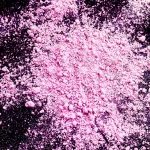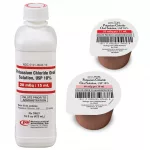Hey there! If you’ve ever wondered why a harmless‑looking almond can turn into a full‑blown emergency for some people, you’re in the right place. In the next few minutes we’ll peel back the layers of nut allergy causes, explore why symptoms appear, and give you practical tips you can actually use. No fluff, just a friendly chat packed with the science you need to feel confident.
Quick Overview
Bottom line: a nut allergy occurs when your immune system mistakenly tags certain proteins in nuts as dangerous invaders. It creates IgE antibodies, releases histamine, and you get the classic nut allergy symptoms—from itchy hives to life‑threatening anaphylaxis. The “why” behind this reaction is a mix of genetics, early‑life exposure, and the exact protein makeup of each nut.
The Science
Protein Culprits
Not every nut protein is an enemy. The main trouble‑makers are:
- Seed‑storage proteins – vicilins, legumins, albumins
- Lipid‑transfer proteins (LTP) – especially common in walnuts, almonds, and cashews
- Profilins and other defense proteins – found in many tree nuts and sometimes cross‑react with pollen
These proteins survive cooking and digestion, so even a tiny crumb can set off the alarm. A recent report from Allergy ForAll identified LTP and vicilin as the primary allergens in walnut and almond.
How IgE Antibodies Spark the Reaction
Think of IgE antibodies as the over‑eager security guards of your body. The first time you eat a nut, your immune system may “learn” to recognize one of those proteins. The next time you bite into a cookie, the guards (IgE) shout “Intruder!” and call in mast cells, which dump histamine and other chemicals. The cascade creates the symptoms you recognize as a nut allergy.
Expert Insight
According to a statement from Dr. Zilpah Sheikh, MD, author of WebMD’s nut‑allergy guide, “IgE‑mediated reactions are the most common pathway for food allergies, and they can manifest within minutes or up to several hours, depending on how the allergen is absorbed.”
Genetics & Family History
Allergies love to run in families. If a parent has a nut allergy, the child’s risk can be as high as 30‑40 %. Studies cited by Healthline show that up to 40 % of people with a peanut allergy also react to at least one tree nut.
Environmental & Early‑Life Factors
Scientists are still untangling why some kids become allergic while others don’t. Two big clues are:
- Microbiome differences – babies born by C‑section, those who receive antibiotics early, or who grow up in ultra‑clean environments may develop a less resilient gut flora, which seems to make the immune system more prone to overreact (see MedlinePlus).
- Timing of nut exposure – early, regular exposure to small amounts of peanuts appears protective in some studies, whereas early severe reactions can sensitize the system. The picture isn’t crystal clear yet, but it underscores that “one size fits all” doesn’t apply.
Common Triggers
Tree Nuts vs. Peanuts
Peanuts are legumes, not true nuts, but they share many protein families with tree nuts, leading to cross‑reactivity. About one‑third of peanut‑allergic individuals also react to a tree nut, according to the WebMD overview.
Which Nuts Cause Most Reactions?
Based on the latest epidemiology data:
- Walnut – responsible for ~34 % of nut reactions.
- Cashew – about 20 % and a common cause of severe anaphylaxis in kids.
- Almond – roughly 15 % of reactions, with notable cross‑reactivity to stone fruits.
- Pecan – accounts for 9 % and often clusters with walnut allergies.
Cross‑Reactivity Chart
| Nut | Common Cross‑Reactivity | Key Shared Proteins |
|---|---|---|
| Walnut | Pecan, Peanut, Peach | LTP, Vicilin |
| Cashew | Pistachio, Birch pollen (OAS) | LTP |
| Almond | Peach, Apricot, Cherry | LTP |
| Pecan | Walnut, Hickory | — |
Hidden Sources & Food‑Label Pitfalls
Even if you think you’re avoiding nuts, they love to hide. Nut oils, “flavored” salts, and cross‑contamination in confectionery can sneak in. WebMD reminds readers that a single drop of nut oil is enough to trigger a reaction in highly sensitive individuals.
Symptoms Link
Typical Nut Allergy Symptoms
When the immune alarm goes off, you might notice:
- Skin: hives, redness, swelling (especially lips and eyelids)
- Mouth/Throat: itching, tingling, tight feeling, swelling that can block airways
- GI Tract: stomach cramps, nausea, vomiting, diarrhea
- Respiratory: runny nose, sneezing, wheezing, shortness of breath
- Systemic: drop in blood pressure, faintness—signs of anaphylaxis
Symptoms can appear within minutes or, for some digestive manifestations, up to a few hours later. That delay is why a “late‑onset” reaction still warrants immediate attention.
Why Some Symptoms Arrive Late
When the allergen is swallowed, it first meets stomach acid. Some proteins survive that acidic bath and are absorbed later in the intestines, which explains the lag time for stomach pain or vomiting. Respiratory symptoms, on the other hand, usually hit fast because mast cells in the airway release histamine almost instantly.
Diagnosis Steps
Medical History & Physical Exam
Your doctor will start with a detailed conversation: when did symptoms start, which foods were involved, any family history of allergies, and how severe the reactions have been. This narrative sets the stage for targeted testing.
Allergy Testing Options
- Skin‑prick test – a tiny drop of nut extract is pricked into the skin. A red, raised bump means sensitization. It’s quick and highly sensitive.
- Specific IgE blood test – useful if the skin is oily, broken, or you’re on antihistamines that could skew the skin test.
- Oral food challenge – the gold standard, performed under medical supervision, where you eat gradually increasing amounts of the nut to confirm true allergy.
When to See an Allergist
If you suspect a nut allergy, it’s best to book an appointment with a board‑certified allergist. The American College of Allergy, Asthma & Immunology (ACAAI) offers a handy find‑an‑allergist tool.
Managing Causes
Avoidance Strategies (Primary Treatment)
Since the underlying immune misrecognition can’t be erased (yet), avoidance is the cornerstone of nut allergy treatment. Here are some real‑world tips:
- Read ingredient lists vigilantly—look for “may contain” statements.
- Ask about nut‑free preparation when eating out; call ahead.
- Designate a nut‑free zone in your kitchen and keep separate utensils.
- Educate friends, family, and teachers about your allergy and the need for strict avoidance.
Medical Treatments for Accidental Exposure
If you do get exposed, act fast:
- Epinephrine auto‑injector – your first line of defense for any systemic symptoms. Don’t wait for breathing trouble to get worse; inject at the first sign of swelling, hives, or GI distress.
- Antihistamines (e.g., cetirizine, diphenhydramine) can relieve mild skin itching or nasal symptoms, but they’re not a substitute for epinephrine.
- Call emergency services if symptoms progress or you’re unsure; anaphylaxis can evolve quickly.
Emerging Therapies & Desensitization
Researchers are exploring oral immunotherapy (OIT) – a controlled, gradual exposure to increasing nut amounts under medical supervision. Early trials show promise, especially for peanuts, but the approach is still experimental for tree nuts and carries a risk of reactions during the buildup phase.
Expert Quote Opportunity
Dr. Nayana Ambardekar, MD, notes in WebMD’s review, “While OIT can raise the threshold for reaction, it does not cure the allergy. Patients must still avoid accidental exposure and keep epinephrine on hand.”
Real Stories
Story 1 – A toddler’s first encounter
Emma was two years old when a birthday cupcake—silently infused with almond flour—triggered a sudden rash and vomiting. After a swift trip to the ER and a positive skin‑prick test, her parents learned to scan ingredient lists like detectives. Today, Emma carries an epinephrine injector and enjoys nut‑free treats without fear.
Story 2 – An adult’s surprise cross‑reactivity
Mark, 28, thought he was only peanut‑allergic until a sushi roll with cashew‑based sauce left him with throat swelling. A follow‑up blood test revealed IgE antibodies to both peanuts and cashews. By swapping to a nut‑free soy sauce and keeping his auto‑injector in his backpack, Mark now navigates restaurant menus with confidence.
Resources & Trusted References
For deeper dives, check these reputable sources (linked inline above):
- American College of Allergy, Asthma & Immunology – allergist locator.
- WebMD – comprehensive nut‑allergy guide.
- Healthline – overview of tree‑nut reactions.
- MedlinePlus – medical‑level explanations of immune mechanisms.
- Allergy ForAll – recent prevalence data and protein specifics.
Conclusion
Understanding the nut allergy causes is a blend of biology, genetics, and everyday habits. Your immune system’s over‑reaction to specific proteins, coupled with family history and early‑life exposures, sets the stage for the reactions you may have seen. While the root cause can’t be erased overnight, knowledge empowers you to avoid triggers, recognize symptoms early, and act decisively with epinephrine and professional care.
We’ve covered the science, the common nuts, the symptoms, how to get diagnosed, and practical ways to stay safe. If anything still feels fuzzy, reach out to an allergist—your health is worth that extra conversation.
What’s your experience with nut allergies? Have you discovered a hidden source that surprised you? Share your story in the comments; your insight could help someone else feel less alone on this journey.


















Leave a Reply
You must be logged in to post a comment.